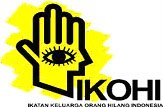| Farzand Ahmed | ||
| Lucknow, November 10, 2008 | ||
| Dhannipur at the outskirts of Shivnagari in Varanasi is a name that has become synonymous with painful death of children due to malnutrition. It's also a name that presents a pathetic picture of a stone-hearted administration. This became more than clear when frail and dangerously underweight Ishrat breathed his last on Saturday. Ishrat was the twelfth child to die of acute malnutrition in recent months. The two-year-old Ishrat suffering from grade-4 protein-energy malnutrition had weighed hardly 3.2 kg when he died. 'By administration's own admission there were 106 children suffering from severe malnutrition in Dhannipur alone. This is happening because auxiliary health staff assigned to look after the children do not visit the area. 30 quintals of grains meant for distribution among the poor weavers of the village was lying undistributed till Ishrat breathed his last', said Dr Lenin Raghuvanshi of People's Vigilance Committee for Human Rights (PVCHR). Just before that two-year-old Shaheena Parveen weighing just three kg had gasped to death. A few days before Shaheena collapsed, her neighbour, two-year-old Sahabuddin, weighing hardly two kg died. And there were others in the same age and weight-group, who were waiting for painful death. Yet the administration was 'doing it best' to save the children from the cruel jaws of death. Local people say that there was reason for such neglect: they are children of weavers whose looms once used to churn out sparkling silk saris. Today their parents are hardly able to arrange food or medicine because they were unable to be engaged in other manual works. While visiting the village PVCHR, Dr Lenin Raghuvanshi felt 'shocked and ashamed'. He and his team was told that the local administration instead of helping the villagers handed them cards meant for 'above poverty line' people that denies them ration from public distribution system (PDS) Recently the most damning comment came from Bijo Francis of Hong Kong-based Asian Human Rights Commission. He had said Sahabuddin died as he was suffering from grade lll malnutrition (categorized as 'Severe'), a condition that the world hears of in places like Somalia. Yet, he said, Uttar Pradesh is not Somalia (where there is non-functioning govt). 'It has a democratically elected government. It has ministers and secretaries who travel around the state in the name of governance in expensive air-conditioned vehicles. It has a woman chief minister at its helm, who has vowed to eradicate discrimination and poverty in the state. Barely six months before Ishrat died, the Uttar Pradesh government had brought out a first-ever report entitled "State of Children in Uttar Pradesh" and it made a sensational reading. The report a joint effort of state's Planning Department and UNICEF disclosed while Uttar Pradesh is home of 52 per cent of the severely malnourished children the all-India figure was 43. It also revealed that while the percentage of malnutrition among children was just 35 per cent in the least developing world, the figure for Sub-Saharan Africa was meagre 28 per cent. South Asia as whole has 42 per cent compared to 26 per cent in the developing countries. According to the report the government realised that malnutrition significantly impacts living condition of children. Ironically, malnutrition is associated with half of all child deaths and Uttar Pradesh accounts for over 10 million of India's 72 million malnourished children. Majority of the districts, across central, eastern, western and Bundelkhand regions report high prevalence of malnutrition. Besides, the state also has high infant and maternal mortality rate -73 per 1000. Of the 2.5 million children who die in the country every year, close to 4 lakhs die in Uttar Pradesh and every third infant born in the state is under weight - below 1200 grams. But what the 'The State of Children in UP' talks about was shocking to the world as it revealed that majority of state's children lived in the wild world. According to this report Uttar Pradesh accounted for 23 per cent of kidnapping of children at the national level. Incidents of other heinous crimes like murder, rape and infanticide were also found to be equally high in the state, particularly in Western Uttar Pradesh. Uttar Pradesh reported the highest number of murders of children accounting for 39.2 per cent of the total cases reported in the country. A total of 3,542 cases of child rape were reported in the country during 2004 and the state has ranked third amongst other states in this crime. A recent report published by the National Crime Records Bureau (NCRB) showed that between 2003-2004 there was an alarming 24 per cent rise in the crime against children in the country. While the number of such cases was 11,633 in 2003, it rose to 14,423 in 2004. Among the states Madhya Pradesh ranked first with 3,653 cases while UP ranked third with 1,921 cases. However it showed a decline by 10.2 per cent as compared to 2,248 cases during 2004. Uttar Pradesh, according to this report, stood first with 735 reported cases of kidnapping. But the most heinous was the rape of children and Uttar Pradesh reported 394 cases in 2003 accounting 11.12 per cent of the total child rape reported in the country. Uttar Pradesh ranked third among states for child rape cases in 2004-just behind Madhya Pradesh (710 cases) and Maharashtra (634 cases). Like other crimes, incidence of rape was also high in Western Uttar Pradesh. Of the 11 districts that showed high incidence 7 were located in Western Uttar Pradesh. | ||
| ||
| | ||
| URL for this article : | ||
| http://indiatoday. | ||
| @ Copyright 2008 India Today Group. | ||
--
Dr. Lenin (Ashoka Fellow and 2007 Gwanju Human Rights Awardee)
Mobile:+91-9935599333
Please visit:
http://www.universalrights.
www.pvchr.org
www.youtube.com/pvchrindia
www.pvchr.blogspot.com
www.sapf.blogspot.com
www.antiwto.blogspot.com
www.rtfcup.blogspot.com
www.dalitwomen.blogspot.com
www.lenin-shruti.blogspot.com
http://www.orkut.com/































